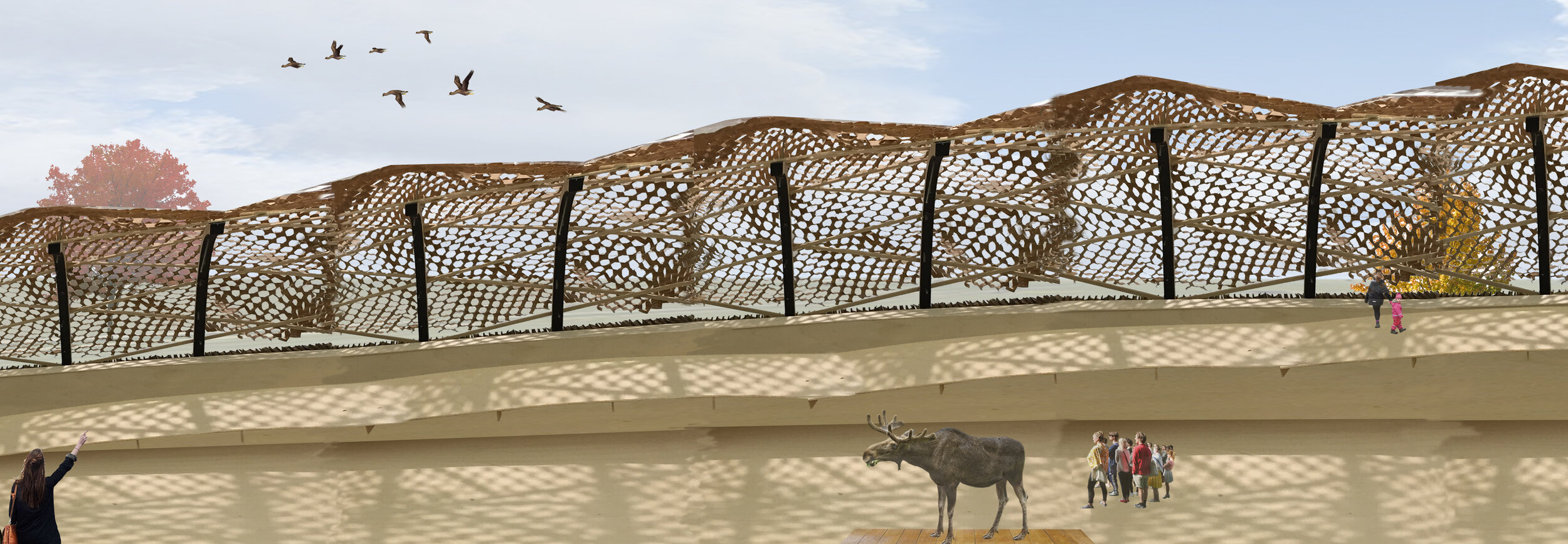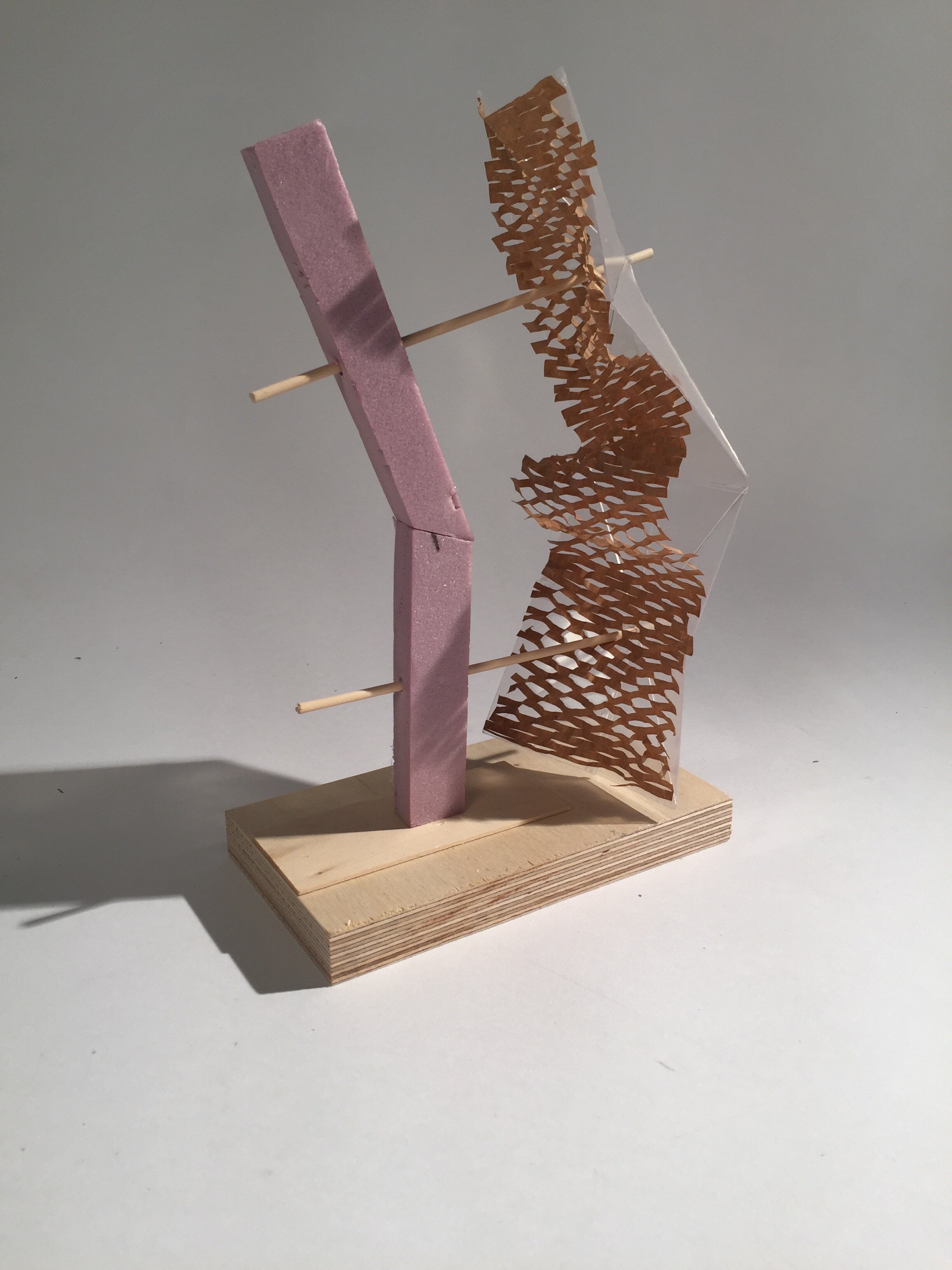Capstone: Bell Museum of Natural History Addition
University of Minnesota, 2017
Concept
The addition to the existing Bell Museum of Natural History at the University of Minnesota focuses on creating a new entry sequence and outdoor gathering space for the community. Using the metaphor of the geologic formation of a drumlin, this intervention takes the traditional heavy typology of a drumlin and inverts it, creating a pavilion that floats above the building and out into the landscape.
Mimicking these geological processes, one enters the building and is presented with a choice: three routes lead to each of the three floors. Walking along the ribs of the pavilion, the different paths offer glimpses out into the landscape. Open to the air, the pavilion has different uses based on seasonality and museum needs.
Structural Analysis and Components
The exterior shell is composed of several layers. This successive lamination creates a dappled lighting effect within the space, removing the user from the busy streets on the outside, and immersing them within the building. Mesh, located behind the outer glass, is made of a light gauge steel that is bent and pulled to create a volumetric effect that adds definition to the space. Starting from the bottom, the planetarium is situated within a concrete bathtub, on which a series of steel rods of the same length fluctuate in and out of the wooden ribs to create a dynamic outer glass shell.











![RhinoCirculationDiagram [Converted]-01.jpg](https://images.squarespace-cdn.com/content/v1/5be19a51710699d083aab159/1605827280682-VOGP2GLIURIMQVYED5G0/RhinoCirculationDiagram+%5BConverted%5D-01.jpg)




